Hydrogen is prevalent in the Earth’s universe, making it safe to use in many industries by creating clean energy and storing energy from renewable energy.
Naturally All fuels are dangerous to a certain extent. For safety Fuel consumption focuses on the prevention of situations with three combustion factors: fuel, ignition source. (Sparks or heat) and oxidants (air), where we can design fuel systems and set guidelines for safe fuel management and use. By appropriate engineering controls
Many hydrogen properties make it safer to manage and operate than current commonly used fuels, and some hydrogen properties require additional engineering control to ensure safe use. Hydrogen systems tests such as tank leak test, garage leak simulation and hydrogen tank drop test have also been shown to safely produce, store and distribute hydrogen. As more and more hydrogen is demonstrated, hydrogen safety records can grow and build confidence that hydrogen can be as safe as the most widely used fuels today.
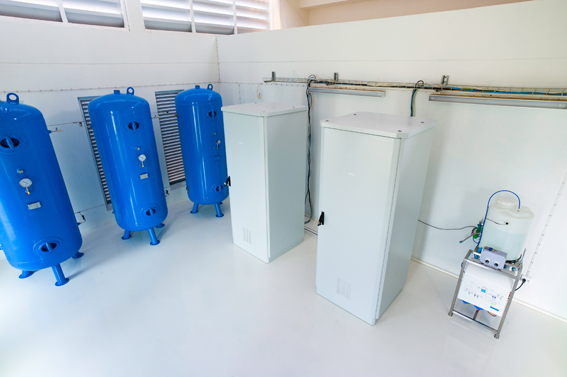
Hydrogen flames have low heat. Because the burning of hydrogen produces heat and water. Without carbon, the hydrogen flame is much less heat radiated compared to hydrocarbons. Therefore there is a lower risk of flame.
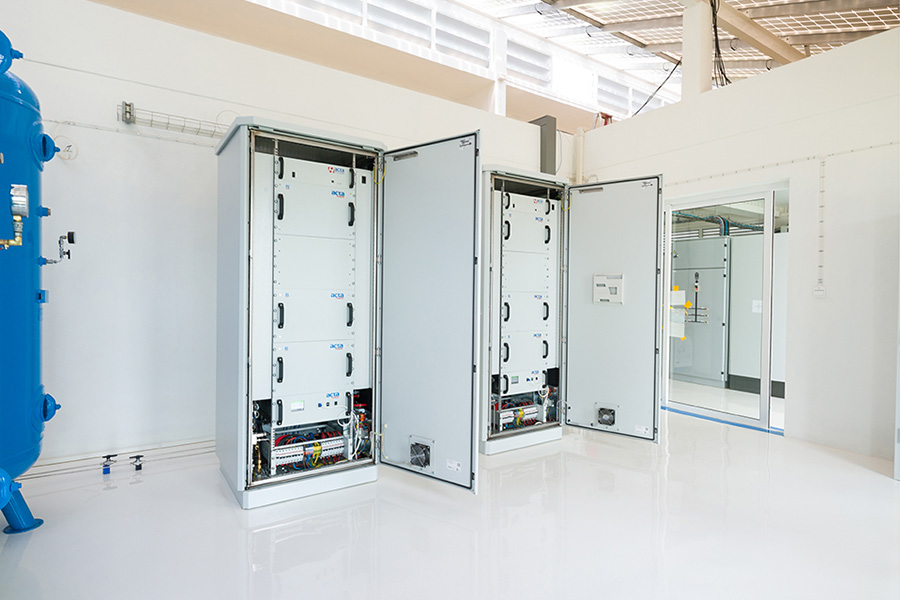
Our energy system is designed to store solar energy in the most efficient and ecological way. The hybrid hydrogen battery system adds to the advantages of both hydrogen storage systems and batteries.
Electricity generation using our solar panels Able to generate electricity at 384.2 kWh per hour. Which the residual electricity from use Will be applied to the electrolyte cis Let’s do the separation of hydrogen and oxygen. (Electrolysis process) Resulting in hydrogen gas being released and stored in a hydrogen storage tank. To generate electricity for use in the absence of sunlight By bringing hydrogen gas mixed with air To be the fuel to generate electricity The results obtained from the fuel cell work are direct current, heat and pure water (H2O).
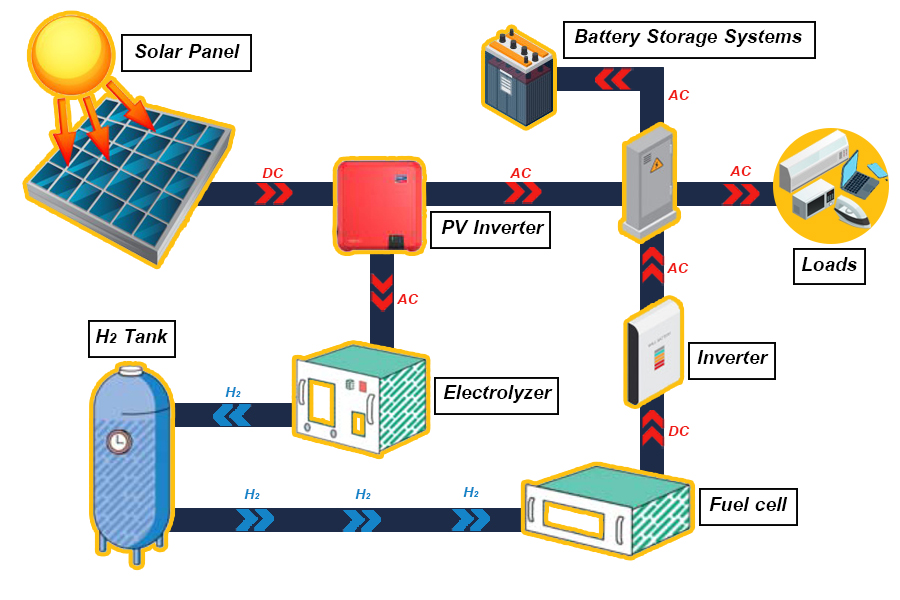
THE PRINCIPLE OF HYDROGEN STORAGE SYSTEMS
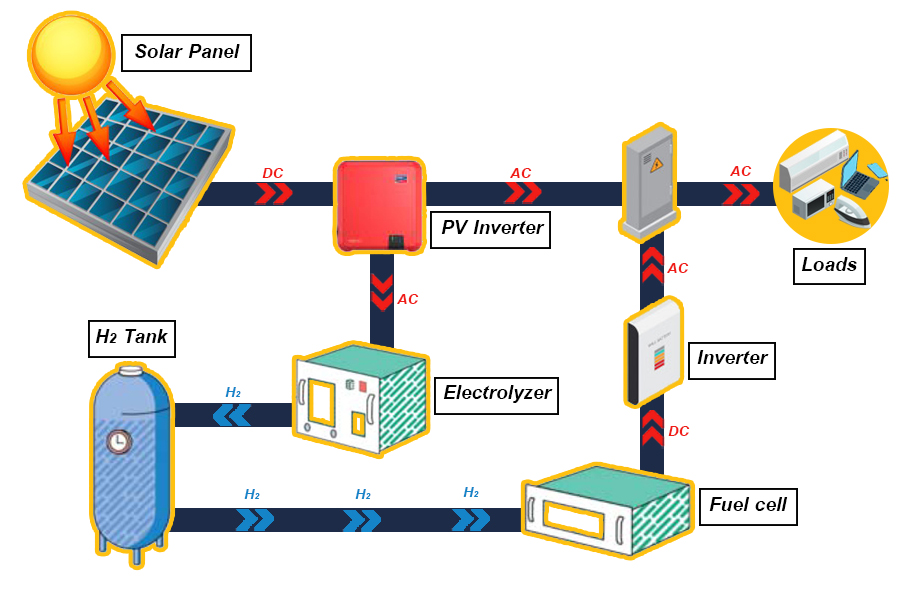
The main principle of the Hydrogen Storage System is to store electrical energy from the sun in the form of Hydrogen gas stored in the tank and hydrogen gas is used to generate electricity. Using fuel When the sun doesn’t shine.
The Hydrogen Storage System must be connected to the Solar Electric Systems with Solar Panel, consisting of Solar cell and Inverter that changes the electricity bill. To generate electricity from solar energy during the daytime
DAY TIME
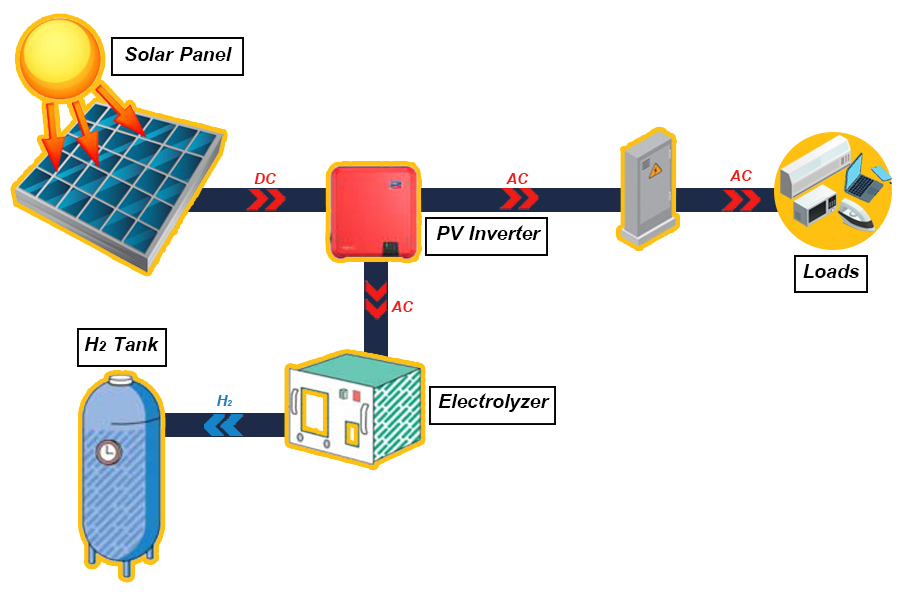
The electricity that solar panels generate is direct current (DC power) .The electricity is sent to the Inverter to convert from direct current (DC power) to AC power, and part of the electricity is sent. Electrolyser generates Hydrogen and Oxygen from water and keeps Hydrogen in the tank but releases Oxygen gas goes in the air.
NiGht Time
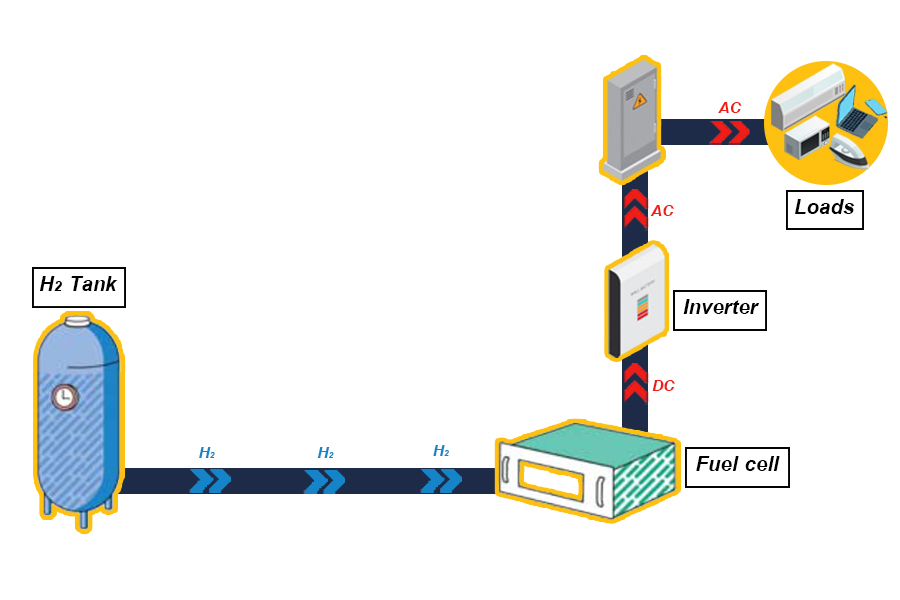
Hydrogen stored in the tank is mixed with air. It is fuel to generate electricity which will receive electricity sent to Inverter. To convert the current value and sent into the home electrical system to replace the solar electricity That cannot be produced during the night.
Connecting the Hydrogen Storage System to Battery Storage Systems helps maintain a home’s energy balance. Which is 100% safe and the other product that is achieved through that process is oxygen and water having minimal to no impact on the environment
Chiang Mai Solar has piloted the Hydrogen Storage System for “Phi Suea House”, a sustainable residential project powered by solar-harvesting solar panels. Designed to reduce the impact on residential areas and reduce carbon dioxide emissions.
Learn more about “Phi Suea House”
Hydrogen Storage System is a sustainable power generation system because it connects to Solar cells that utilize solar energy. Which makes use of the burning of hydrogen To get electricity and will also get water and oxygen for the environment. It is the most efficient and sustainable use of natural energy sources.